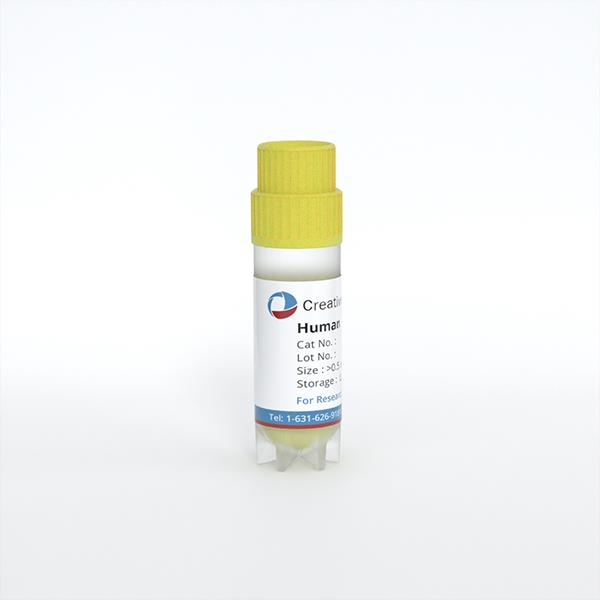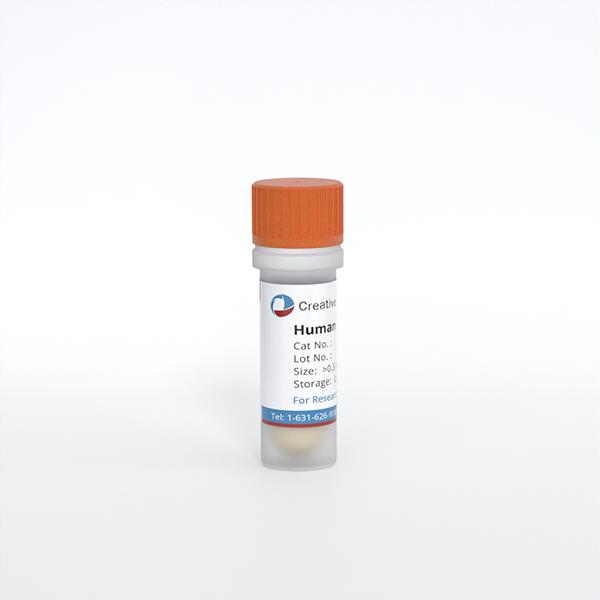
Human Ovarian Surface Epithelial Cells
Cat.No.: CSC-C1542
Species: Human
Source: Ovary
Cell Type: Epithelial Cell
- Specification
- Background
- Scientific Data
- Q & A
- Customer Review
HOSEpiC are isolated from human ovarian tissue. HOSEpiC are cryopreserved either at primary or passage one cultures and delivered frozen. Each vial contains >5 x 10^5 cells in 1 ml volume. HOSEpiC are characterized by immunofluorescent method with cytokeratine antibodies (CK-14, -18 and -19). HOSEpiC are negative for HIV-1, HBV, HCV, mycoplasma, bacteria, yeast and fungi. HOSEpiC are guaranteed to further expand for over 5 population doublings in the conditions provided by Creative Bioarray.
Human Ovarian Surface Epithelial Cells (HOSECs) refer to epithelial cells collected from the outer layer of normal human ovaries. The ovary is a reproductive organ in the female system, producing oocytes and steroid hormones. The ovarian surface houses epithelial cells at different locations which display varied morphologies including squamous, cuboidal and low columnar forms. HOSECs are involved in ovulation and react to hormones to release the follicle and oocyte. During the ovulation process, HOSECs rupture and get damaged and subsequently repair through both cell proliferation and migration. HOSECs express various hormone receptors and can respond to alterations in hormone levels, including estrogen receptors and progesterone receptors.
Moreover, studies have shown that ovarian epithelial cancers are derived from HOSECs, and their abnormal behavior and genetic mutations can cause tumors. Thus, this cell line is a model to study ovarian epithelial cancer. For instance, the abnormal behavior and genes of HOSECs can be examined to understand the causes and therapies of ovarian cancer. Moreover, as this cell line can express multiple hormone receptors, it is feasible to use it to study hormones' effects on the ovary, especially for the endocrine-related diseases.
 Fig. 1. Morphology of normal ovarian surface epithelial (NOSE) cells (Li N F, Wilbanks G, et al., 2004).
Fig. 1. Morphology of normal ovarian surface epithelial (NOSE) cells (Li N F, Wilbanks G, et al., 2004).
Cell Viability/Cytotoxicity and Morphological Changes in HOSE Cells following OCPs Exposure
Exposure to organochlorine pesticides (OCPs) may contribute to the risk of epithelial ovarian cancer, but the underlying mechanisms remain unclear. In the present study, Shah et al. investigated the effects of dichlorodiphenyldichloroethylene (DDE), endosulfan, and heptachlor on E-cadherin and proinflammatory mediators in human ovary surface epithelial (HOSE) cells.
HOSE cells treated with increasing concentrations of DDE, endosulfan, and heptachlor had a decreased cell viability (Fig. 1). The IC50 for DDE, endosulfan, and heptachlor was 74.27, 69.53, and 68.34 µM, respectively. They used concentrations up to 10 µM for OCPs exposure, which resulted in over 100% cell viability. Dose at 20 µM was approximately 100% viability for all OCPs. Concentrations at 30 µM for DDE, endosulfan, and heptachlor were cytotoxic (Fig. 1). Therefore, the highest noncytotoxic concentration (10 µM) was chosen for DDE, endosulfan, and heptachlor in this study. HOSE cells with 72 h exposure to 10 µM of DDE, endosulfan, and heptachlor retained cobblestone (cuboidal) cell structures (Fig. 2A). DDE, endosulfan, and heptachlor-exposed HOSE cells formed aggregates and clumps (Fig. 2B–D). This indicated that OCPs exposure may promote epithelial differentiation and inhibit mesenchymal transition in HOSE cells.
 Fig. 1. Effect of OCPs on HOSE cell viability. Cells were treated with increasing concentrations (1 µM to 200 µM) of DDE, endosulfan, and heptachlor for 72 h (Shah H K, Banerjee B D, et al., 2022).
Fig. 1. Effect of OCPs on HOSE cell viability. Cells were treated with increasing concentrations (1 µM to 200 µM) of DDE, endosulfan, and heptachlor for 72 h (Shah H K, Banerjee B D, et al., 2022).
 Fig. 2. The morphology of HOSE cells. HOSE cells were treated with (A) 0.25% DMSO (control), 10 µM of (B) DDE, (C) endosulfan, and (D) heptachlor for 72 h (Shah H K, Banerjee B D, et al., 2022).
Fig. 2. The morphology of HOSE cells. HOSE cells were treated with (A) 0.25% DMSO (control), 10 µM of (B) DDE, (C) endosulfan, and (D) heptachlor for 72 h (Shah H K, Banerjee B D, et al., 2022).
Antagonistic Effect of Melatonin Against OIS in Human Ovarian Surface Epithelial Cells
Ovarian aging, as an organ senescence, is the pathophysiological basis of various diseases of the reproductive system. As ovarian aging progresses, the loss of surface epithelial integrity and depletion of human ovarian surface epithelial cells (HOSEpiCs) is its typical manifestation. The following studies were conducted to investigate the epigenetic protective effect of melatonin on HOSEpiCs.
HOSEpiCs were transfected with H-RasV12 or an empty vector (as control) and treated with melatonin at 10 nM, 100 nM, 1 μM, 10 μM or 100 μM. Ras treatment caused an increase in SA-β-galactosidase-positive cells, yet 1 μM melatonin successfully blocked the senescence triggered by Ras (Fig. 3A). Telomere length was reduced in the Ras-treated group but was restored by 1 μM melatonin treatment (Fig. 3B). Ras-induced growth arrest was also blocked by 1 μM melatonin treatment over a course of 8 days (Fig. 3C). The BrdU incorporation assay showed that melatonin significantly abrogated Ras-induced cell cycle arrest (0.11% in Ras-treated vs. 0.36% in Ras + melatonin, P < 0.05) (Fig. 3D). In addition, the expression of senescence markers p53, p21 and p16, upregulated by Ras, was reduced by melatonin treatment (Fig. 3E). Collectively, melatonin antagonizes Ras-induced senescence in HOSEpiCs.
 Fig. 3. Antagonistic effect of melatonin against OIS-induced senescence of human ovarian surface epithelial cells (Zhu R X, Ji X, et al., 2022)
Fig. 3. Antagonistic effect of melatonin against OIS-induced senescence of human ovarian surface epithelial cells (Zhu R X, Ji X, et al., 2022)
Ask a Question
Write your own review

